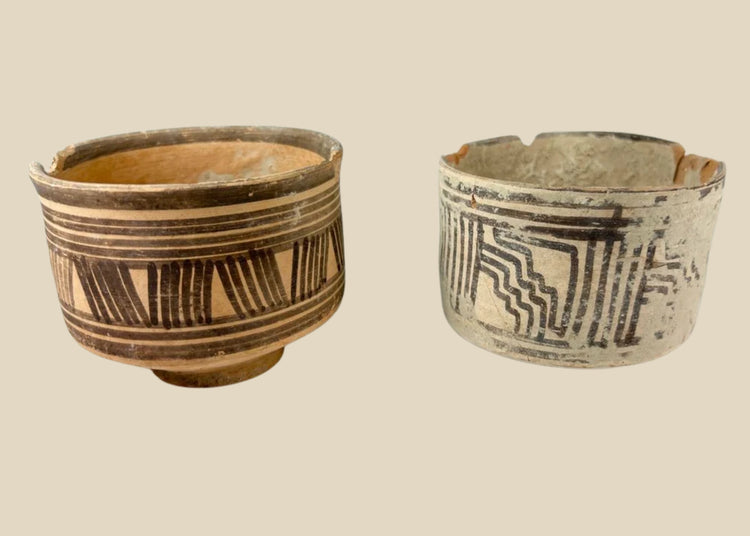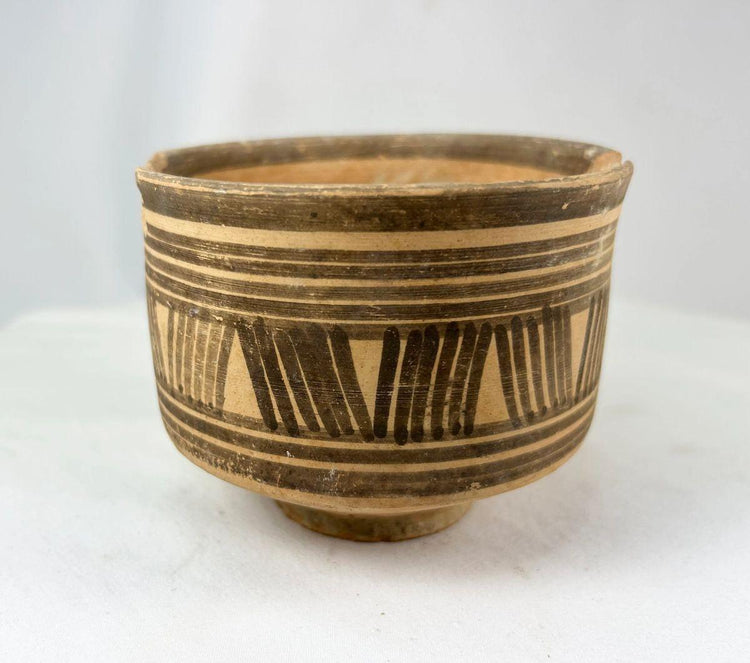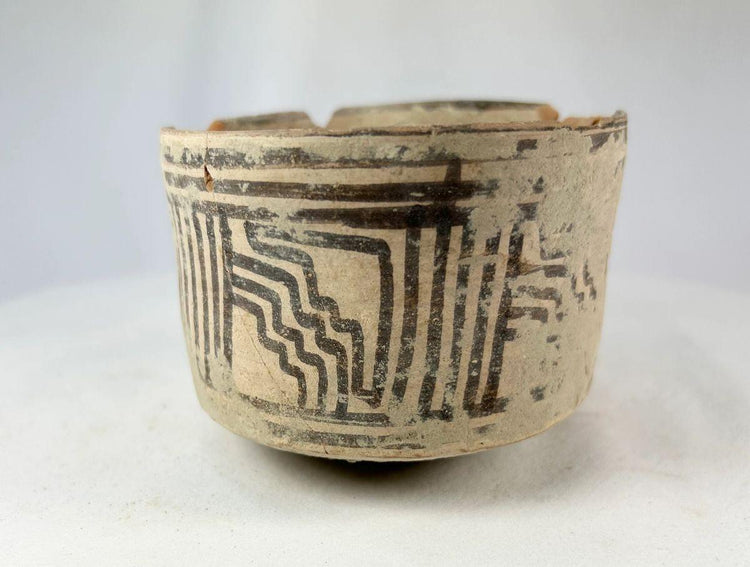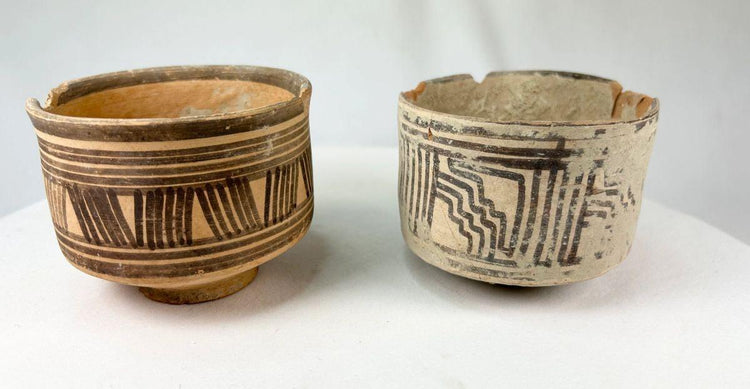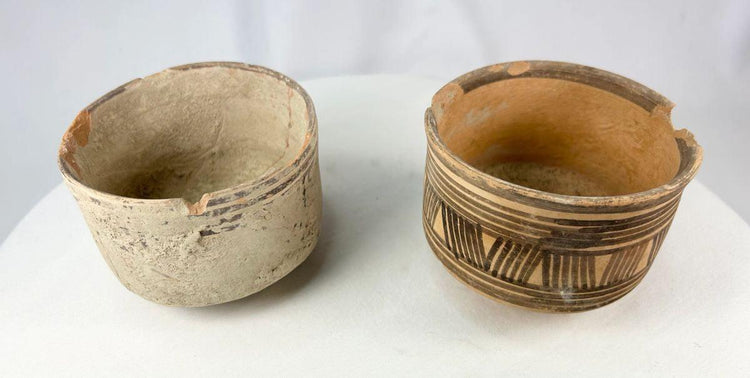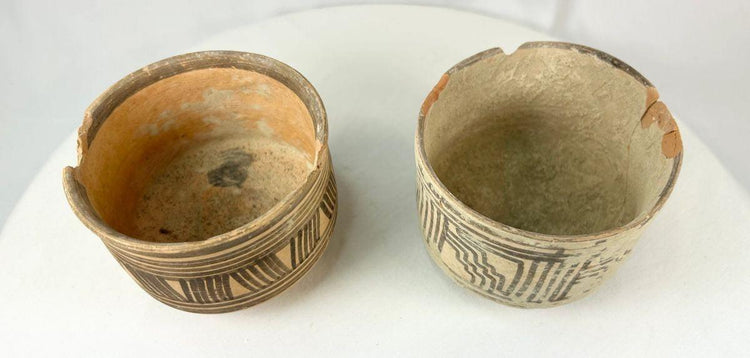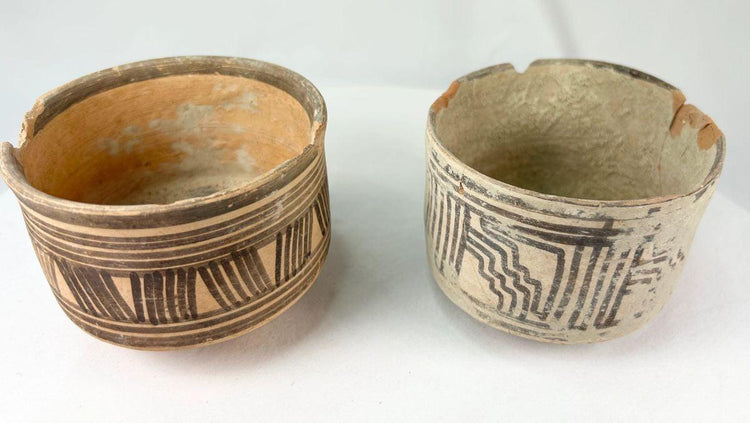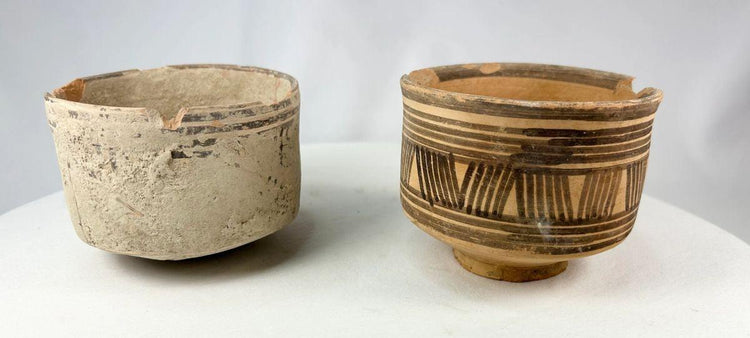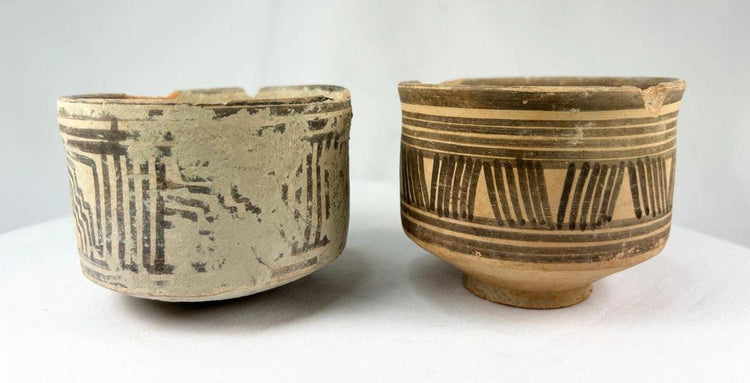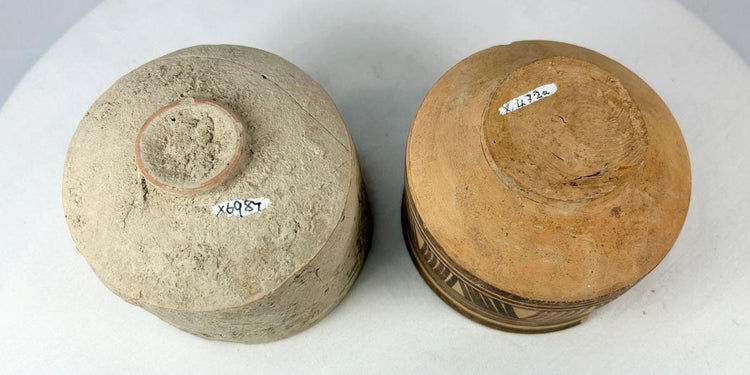Indus Valley Civilization | Pair of Geometric Painted Terracotta Vessels | Circa 2600–1900 BCE
Description
More
Less
Historical Context & Origin
Region: Indus Valley Civilization, likely Northwestern India or present-day Pakistan
Material: Terracotta clay with painted slip decoration
Period: Circa 2600–1900 BCE (Mature Harappan Phase)
Description
This rare matching pair of hand-crafted ceramic vessels exemplifies the refined pottery traditions of the Indus Valley Civilization. Both pieces feature black slip-painted decoration over a buff terracotta body, with distinctive geometric motifs characteristic of Mature Harappan artistry. Vessel A rests on a short foot, with alternating vertical lines and triangular patterns bordered by concentric bands. Vessel B, slightly taller with a flat base, displays an abstract labyrinthine linear design. Each vessel shows mineral deposits, surface erosion, and rim losses consistent with ancient burial, testifying to their authenticity and archaeological integrity.
Features
- Pair of Indus Valley ceramic vessels with black slip-painted designs
- Intricate geometric and linear patterns in Harappan style
- Hand-shaped with slight asymmetry from ancient wheel-turning
- Surface calcification and earthen accretion from long-term burial
- Archaeological excavation labels intact
Cultural Significance
Pottery was central to daily and ritual life in the Harappan world, serving as vessels for storage, trade, and ceremonial use. The geometric motifs painted on these vessels not only reflect the utilitarian purpose of the objects but also embody the artistic language of one of the world’s earliest urban civilizations. Their survival offers an intimate connection to the sophistication and symbolic life of the Indus Valley.
Condition
Good archaeological condition. Both vessels exhibit rim chipping, surface wear, and calcification consistent with extreme age. Despite minor losses, they remain stable, intact, and well-suited for display.
Dimensions (approximate)
Each vessel:
Diameter: 4 in
Height: 3 in
Age
Estimated over 4,000 years old
Description
Historical Context & Origin
Region: Indus Valley Civilization, likely Northwestern India or present-day Pakistan
Material: Terracotta clay with painted slip decoration
Period: Circa 2600–1900 BCE (Mature Harappan Phase)
Description
This rare matching pair of hand-crafted ceramic vessels exemplifies the refined pottery traditions of the Indus Valley Civilization. Both pieces feature black slip-painted decoration over a buff terracotta body, with distinctive geometric motifs characteristic of Mature Harappan artistry. Vessel A rests on a short foot, with alternating vertical lines and triangular patterns bordered by concentric bands. Vessel B, slightly taller with a flat base, displays an abstract labyrinthine linear design. Each vessel shows mineral deposits, surface erosion, and rim losses consistent with ancient burial, testifying to their authenticity and archaeological integrity.
Features
- Pair of Indus Valley ceramic vessels with black slip-painted designs
- Intricate geometric and linear patterns in Harappan style
- Hand-shaped with slight asymmetry from ancient wheel-turning
- Surface calcification and earthen accretion from long-term burial
- Archaeological excavation labels intact
Cultural Significance
Pottery was central to daily and ritual life in the Harappan world, serving as vessels for storage, trade, and ceremonial use. The geometric motifs painted on these vessels not only reflect the utilitarian purpose of the objects but also embody the artistic language of one of the world’s earliest urban civilizations. Their survival offers an intimate connection to the sophistication and symbolic life of the Indus Valley.
Condition
Good archaeological condition. Both vessels exhibit rim chipping, surface wear, and calcification consistent with extreme age. Despite minor losses, they remain stable, intact, and well-suited for display.
Dimensions (approximate)
Each vessel:
Diameter: 4 in
Height: 3 in
Age
Estimated over 4,000 years old
You May Also Like


























